Category Did You Know?
Shared on Instagram and archived here, this section presents little-known facts about inclusion and disabilities that will help you better understand why inclusion matters, and why you need to care.


The placement of accessibility features, like wheelchair spaces, should not be an afterthought. They should be integrated seamlessly into the event setting to ensure all attendees can fully participate and enjoy. How are you integrating accessibility considerations into the overall layout and design of your event spaces?
More details about Did You Know… #127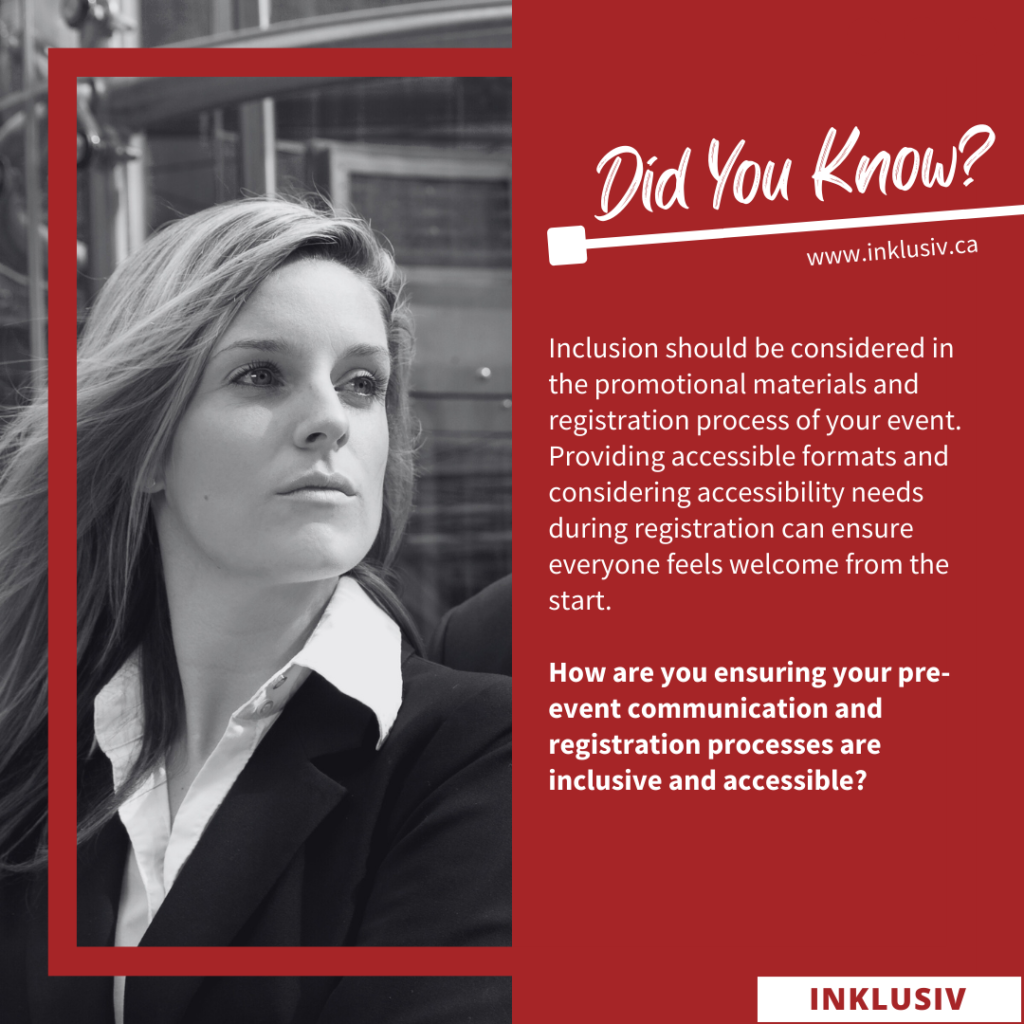

Inclusion should be considered in the promotional materials and registration process of your event. Providing accessible formats and considering accessibility needs during registration can ensure everyone feels welcome from the start. How are you ensuring your pre-event communication and registration processes are inclusive and accessible?
More details about Did You Know… #126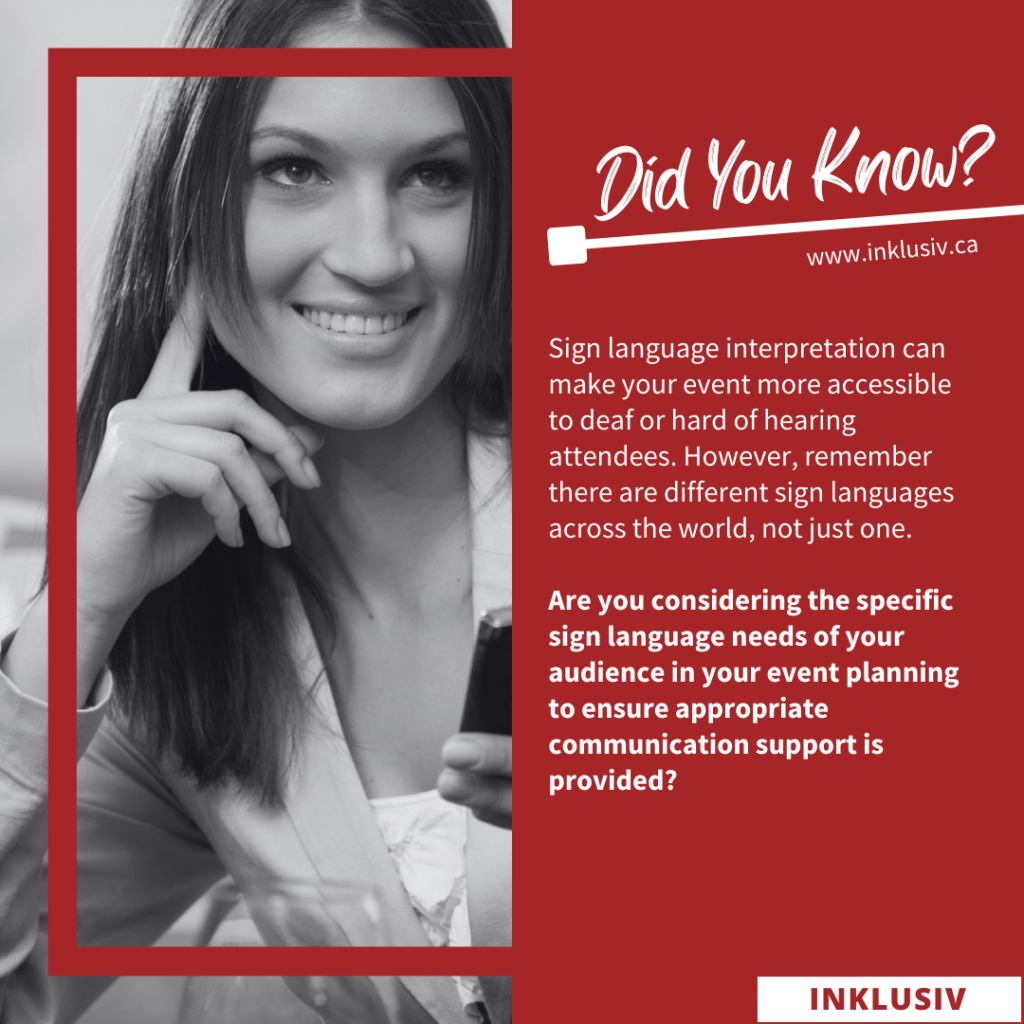

Sign language interpretation can make your event more accessible to deaf or hard of hearing attendees. However, remember there are different sign languages across the world, not just one. Are you considering the specific sign language needs of your audience in your event planning to ensure appropriate communication support is provided?
More details about Did You Know… #125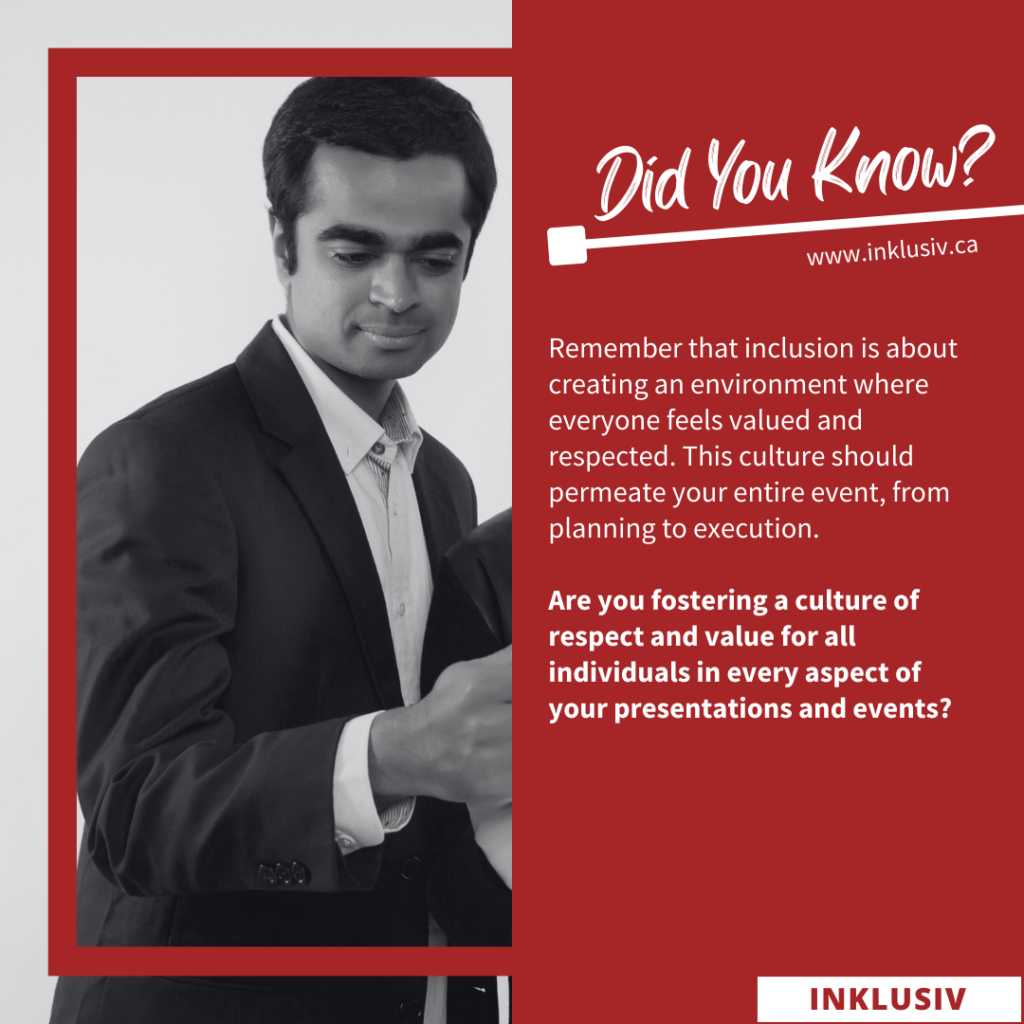

Remember that inclusion is about creating an environment where everyone feels valued and respected. This culture should permeate your entire event, from planning to execution. Are you fostering a culture of respect and value for all individuals in every aspect of your presentations and events?
More details about Did You Know… #124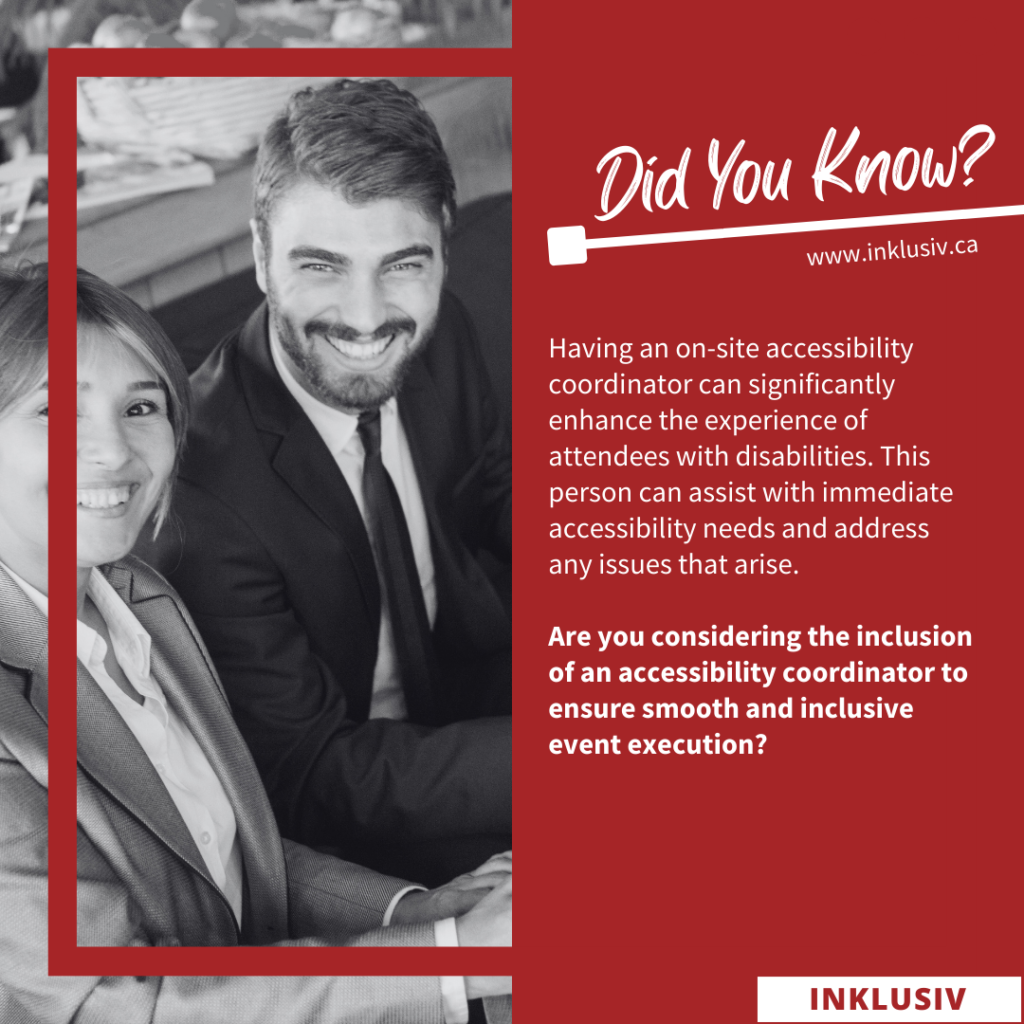

Having an on-site accessibility coordinator can significantly enhance the experience of attendees with disabilities. This person can assist with immediate accessibility needs and address any issues that arise. Are you considering the inclusion of an accessibility coordinator to ensure smooth and inclusive event execution?
More details about Did You Know… #123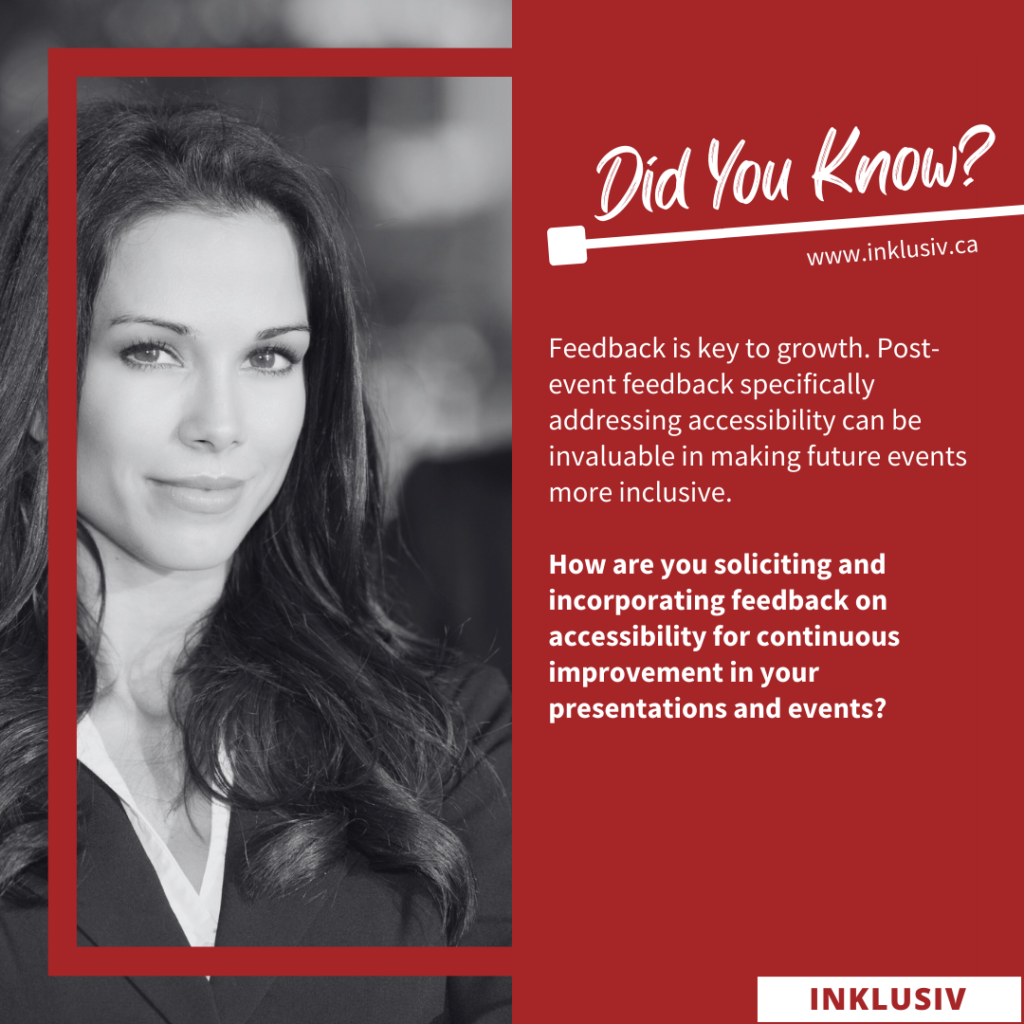

Feedback is key to growth. Post-event feedback specifically addressing accessibility can be invaluable in making future events more inclusive. How are you soliciting and incorporating feedback on accessibility for continuous improvement in your presentations and events?
More details about Did You Know… #122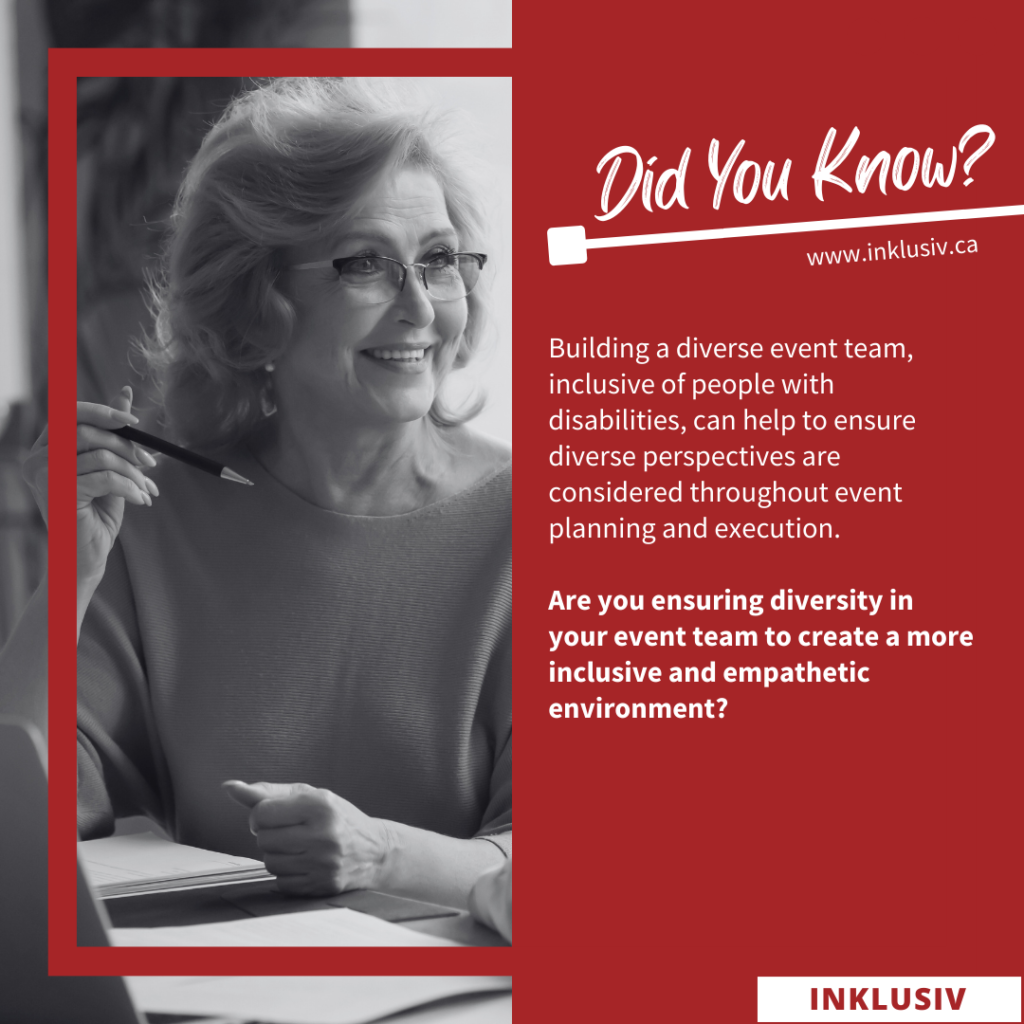

Building a diverse event team, inclusive of people with disabilities, can help to ensure diverse perspectives are considered throughout event planning and execution. Are you ensuring diversity in your event team to create a more inclusive and empathetic environment?
More details about Did You Know… #121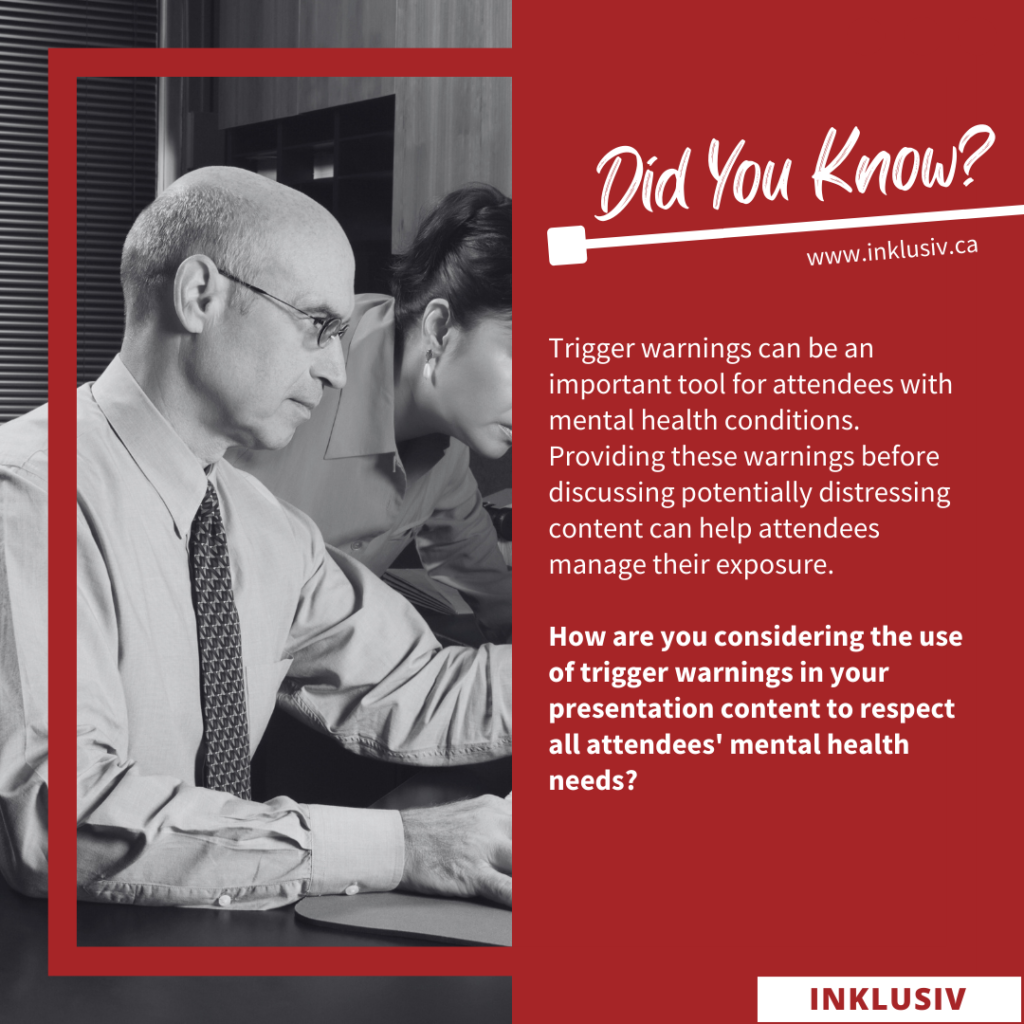

Trigger warnings can be an important tool for attendees with mental health conditions. Providing these warnings before discussing potentially distressing content can help attendees manage their exposure. How are you considering the use of trigger warnings in your presentation content to respect all attendees’ mental health needs?
More details about Did You Know… #120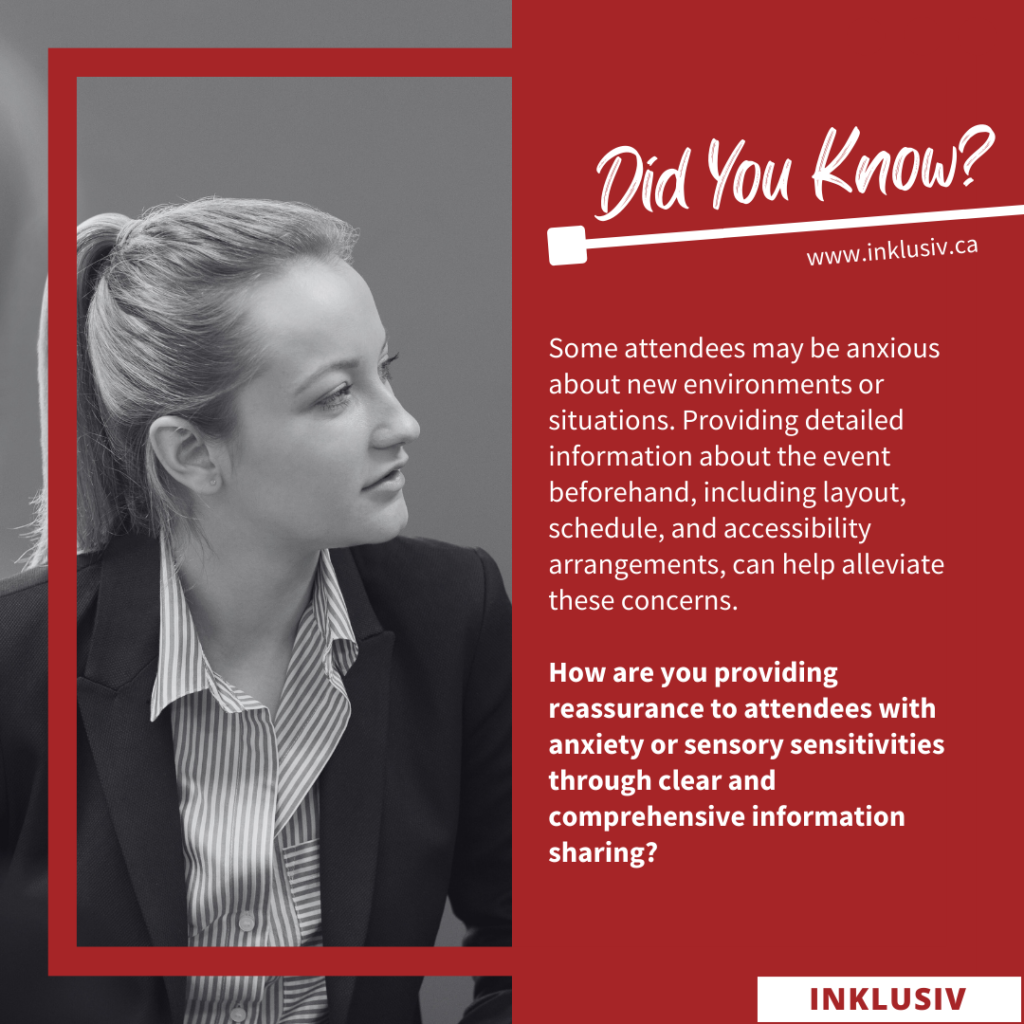

Some attendees may be anxious about new environments or situations. Providing detailed information about the event beforehand, including layout, schedule, and accessibility arrangements, can help alleviate these concerns. How are you providing reassurance to attendees with anxiety or sensory sensitivities through clear and comprehensive information sharing?
More details about Did You Know… #119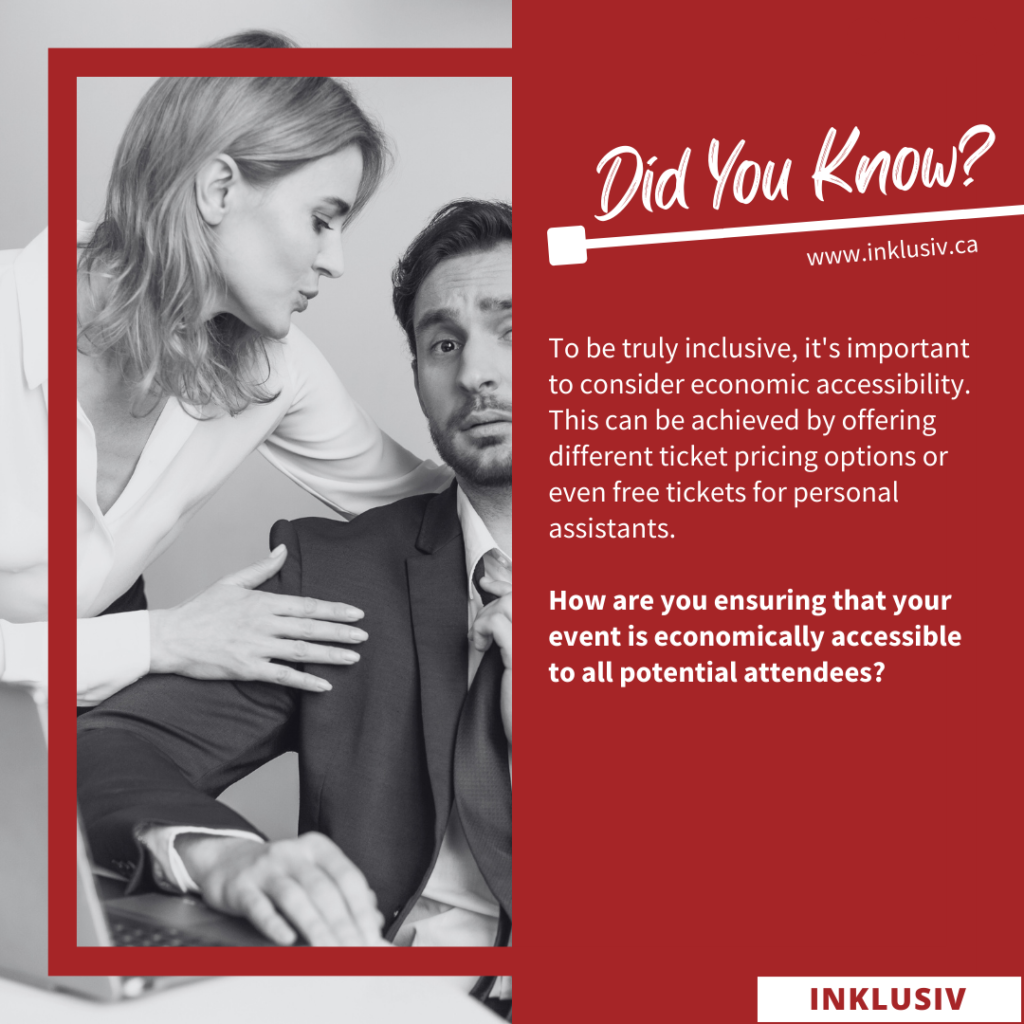

To be truly inclusive, it’s important to consider economic accessibility. This can be achieved by offering different ticket pricing options or even free tickets for personal assistants. How are you ensuring that your event is economically accessible to all potential attendees?
More details about Did You Know… #118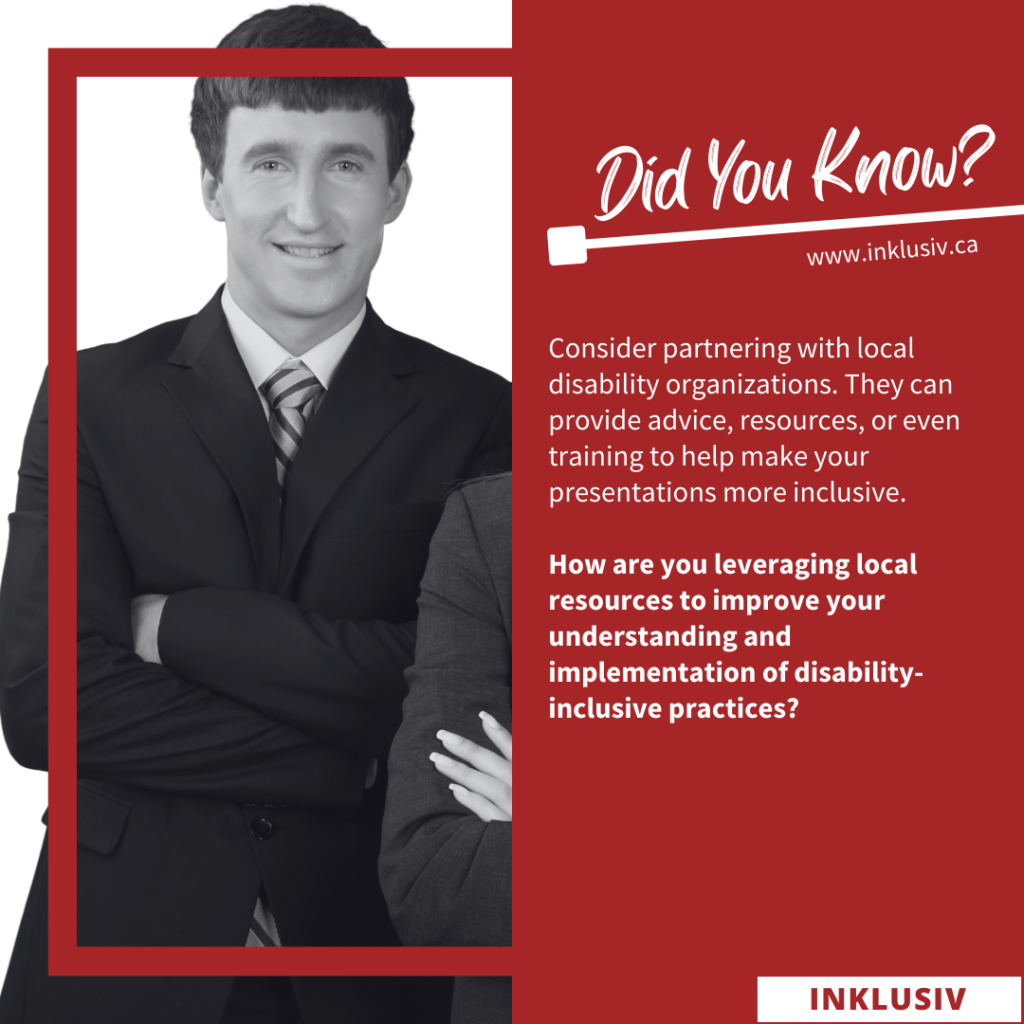

Consider partnering with local disability organizations. They can provide advice, resources, or even training to help make your presentations more inclusive. How are you leveraging local resources to improve your understanding and implementation of disability-inclusive practices?
More details about Did You Know… #117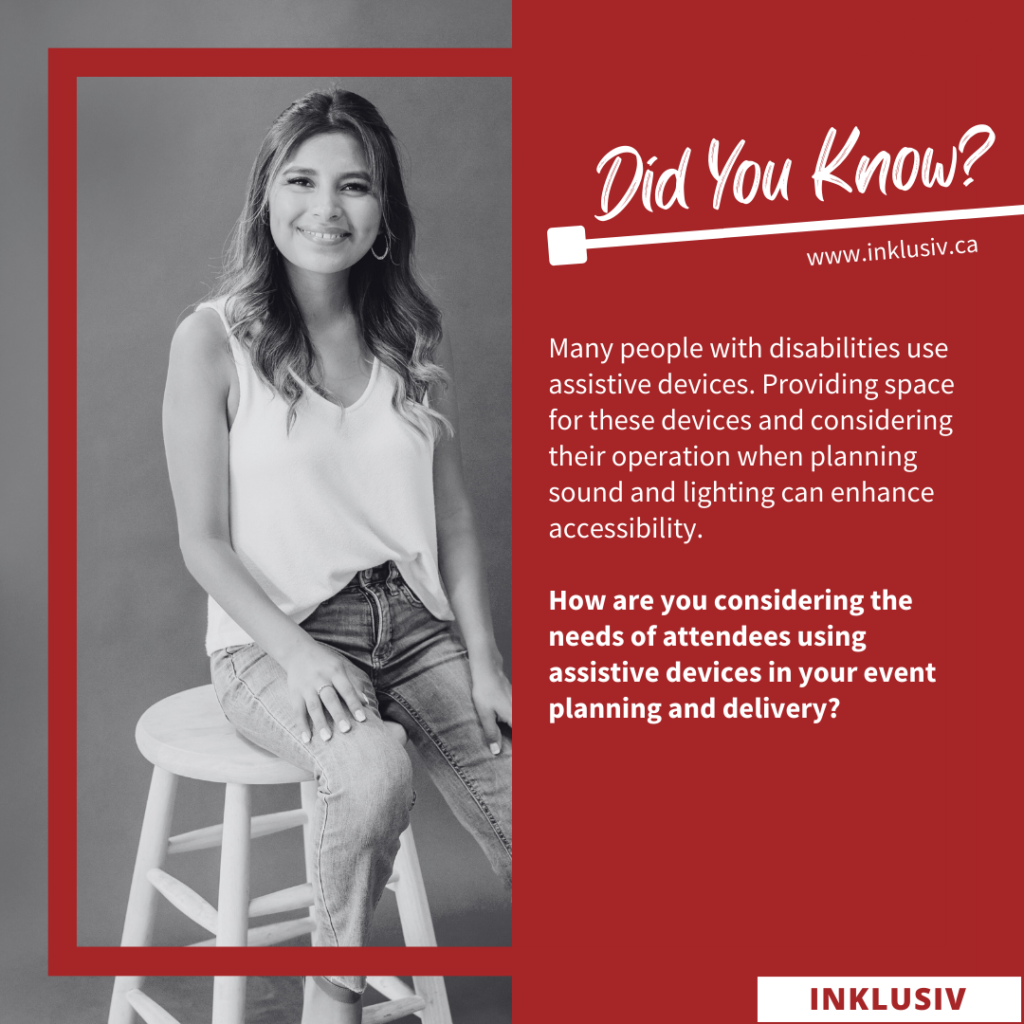

Many people with disabilities use assistive devices. Providing space for these devices and considering their operation when planning sound and lighting can enhance accessibility. How are you considering the needs of attendees using assistive devices in your event planning and delivery?
More details about Did You Know… #116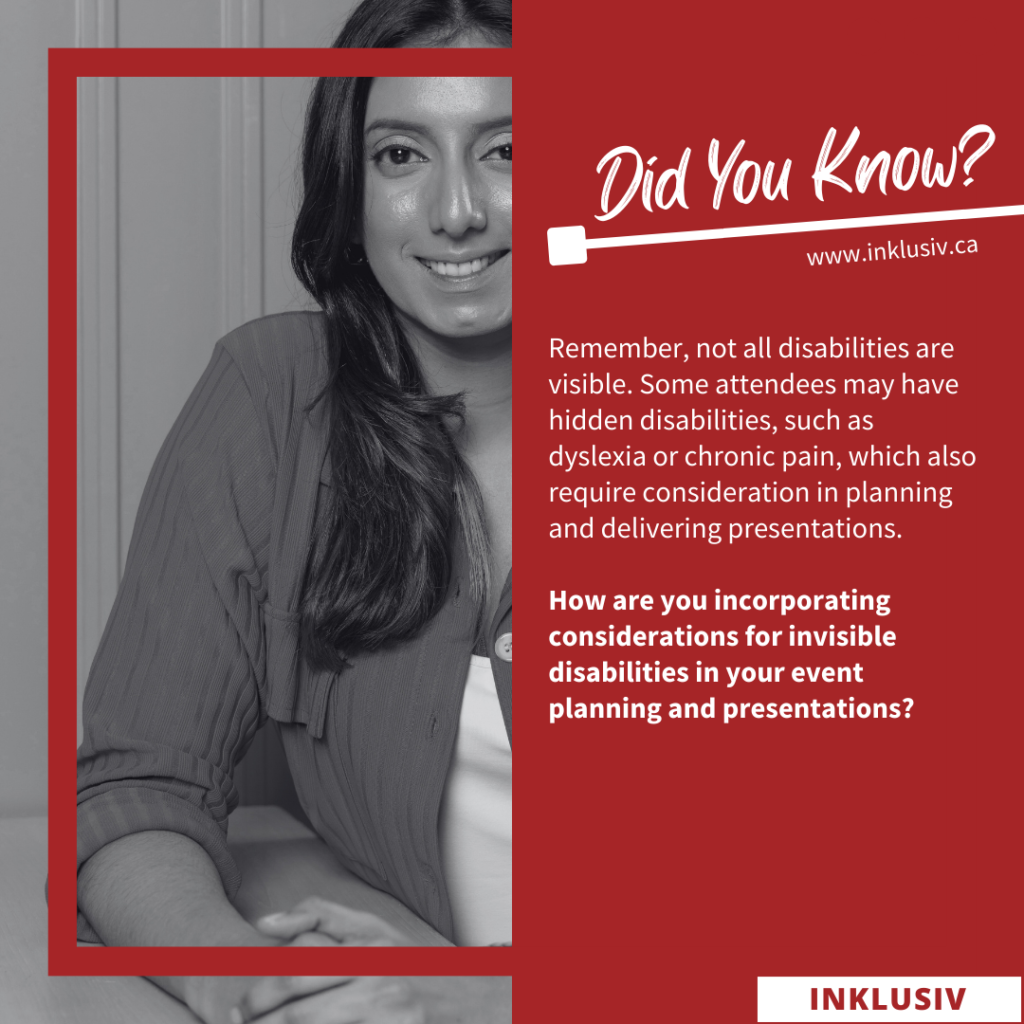

Remember, not all disabilities are visible. Some attendees may have hidden disabilities, such as dyslexia or chronic pain, which also require consideration in planning and delivering presentations. How are you incorporating considerations for invisible disabilities in your event planning and presentations?
More details about Did You Know… #115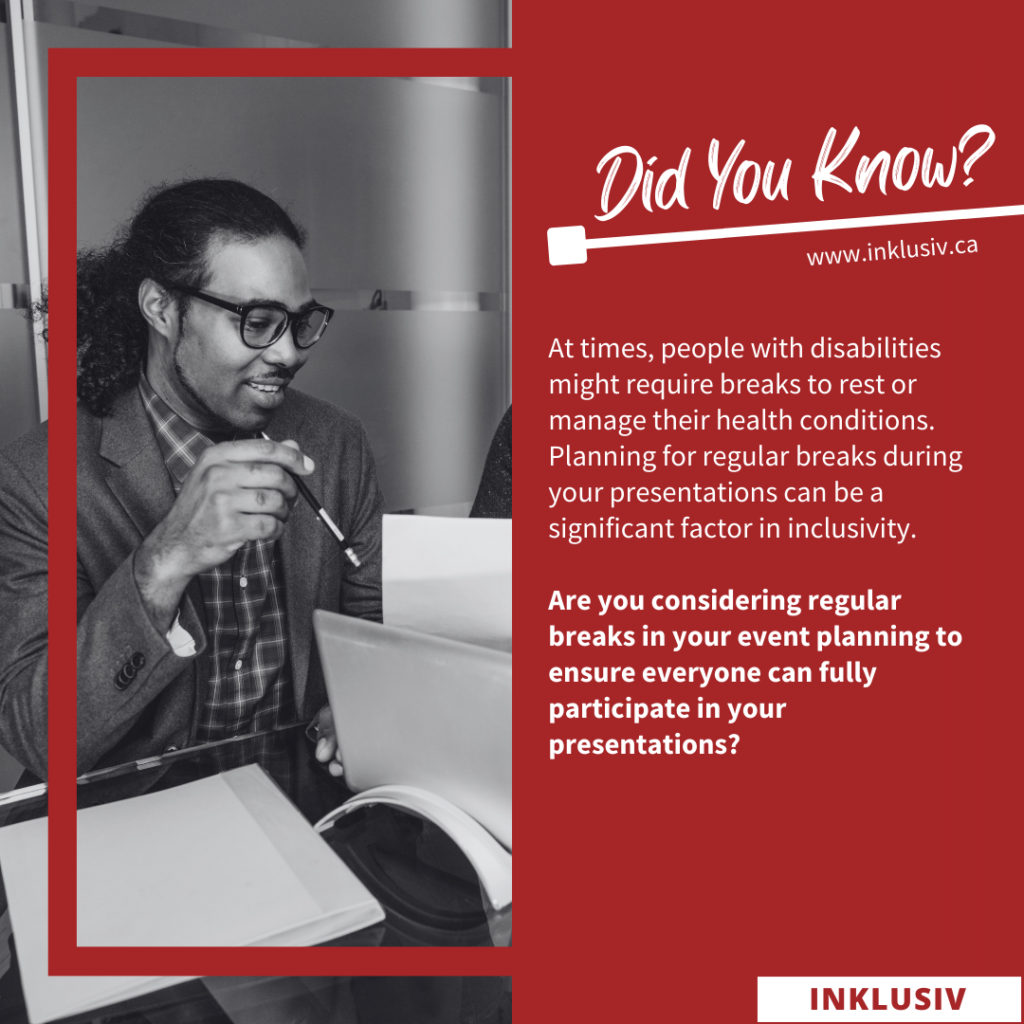

At times, people with disabilities might require breaks to rest or manage their health conditions. Planning for regular breaks during your presentations can be a significant factor in inclusivity. Are you considering regular breaks in your event planning to ensure everyone can fully participate in your presentations?
More details about Did You Know… #114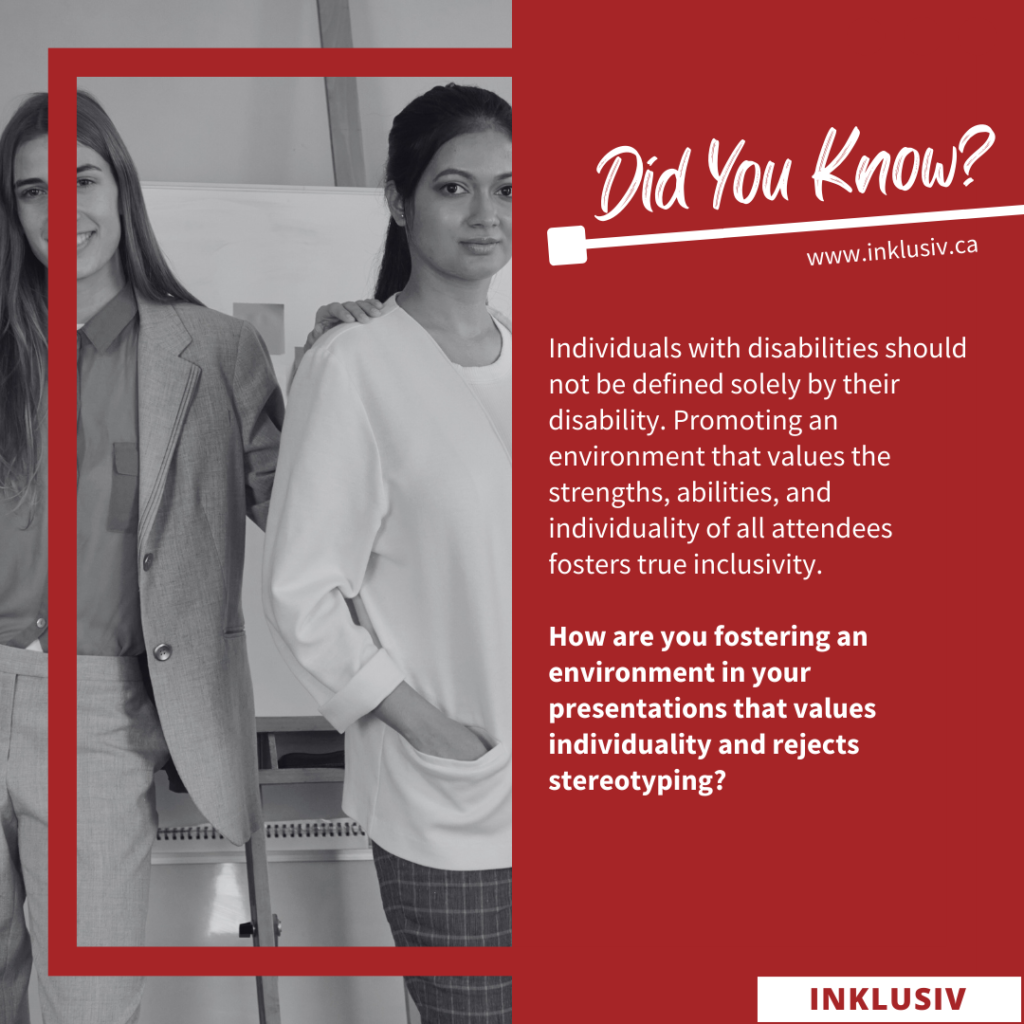

Individuals with disabilities should not be defined solely by their disability. Promoting an environment that values the strengths, abilities, and individuality of all attendees fosters true inclusivity. How are you fostering an environment in your presentations that values individuality and rejects stereotyping?
More details about Did You Know… #113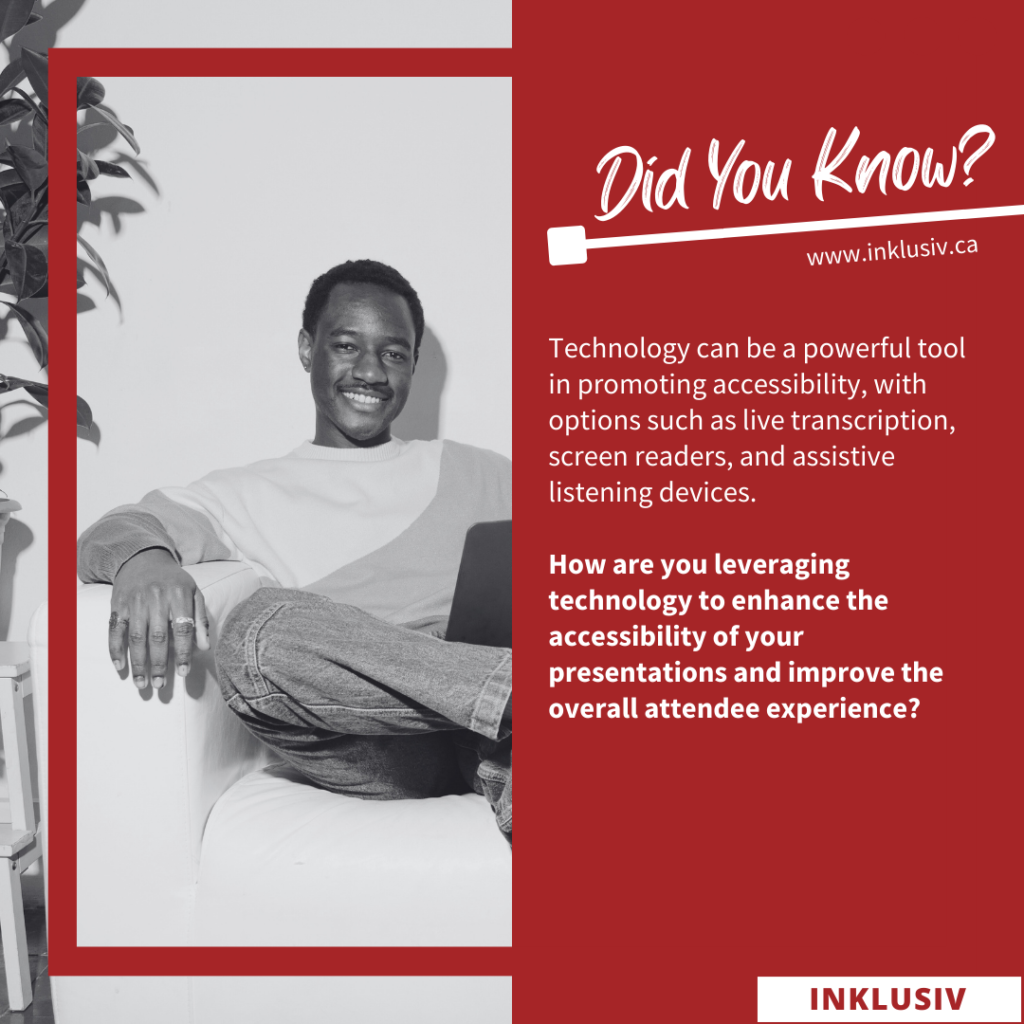

Technology can be a powerful tool in promoting accessibility, with options such as live transcription, screen readers, and assistive listening devices. How are you leveraging technology to enhance the accessibility of your presentations and improve the overall attendee experience?
More details about Did You Know… #112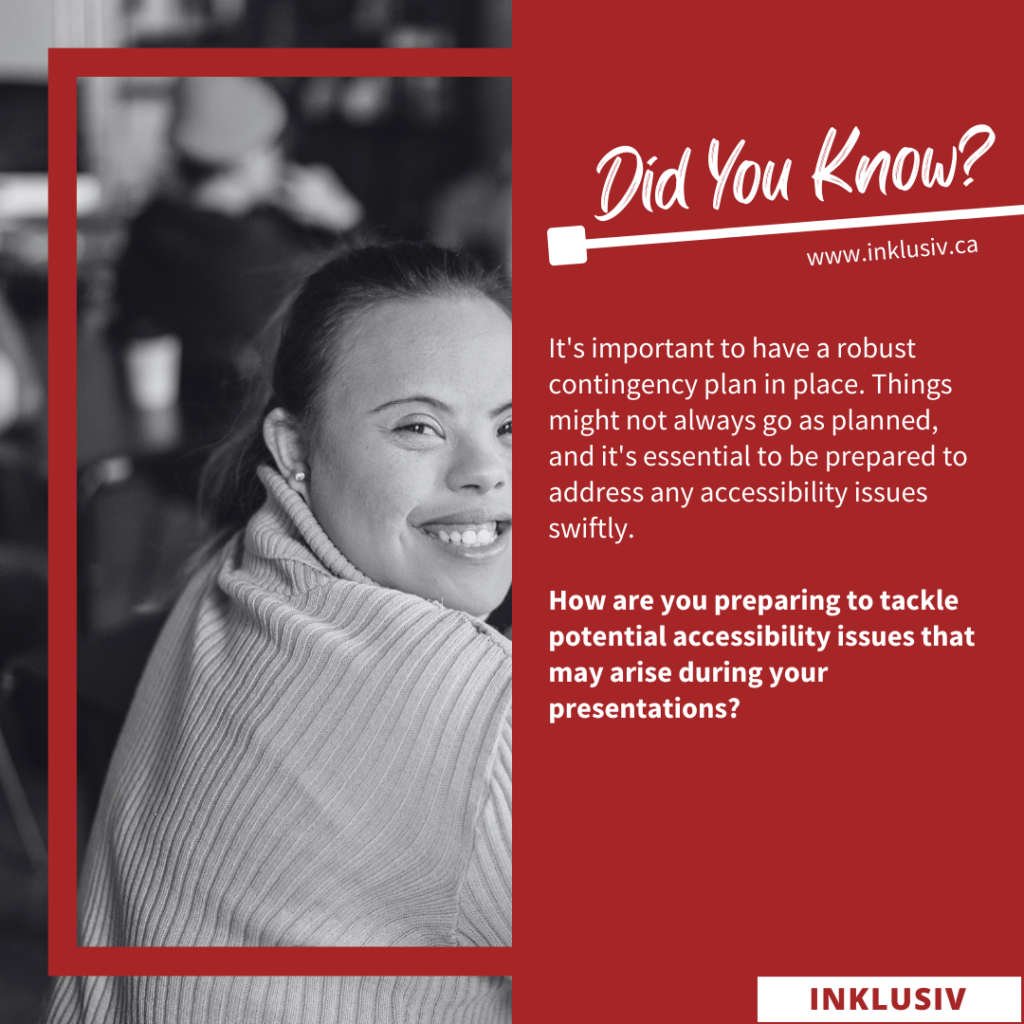

It’s important to have a robust contingency plan in place. Things might not always go as planned, and it’s essential to be prepared to address any accessibility issues swiftly. How are you preparing to tackle potential accessibility issues that may arise during your presentations?
More details about Did You Know… #111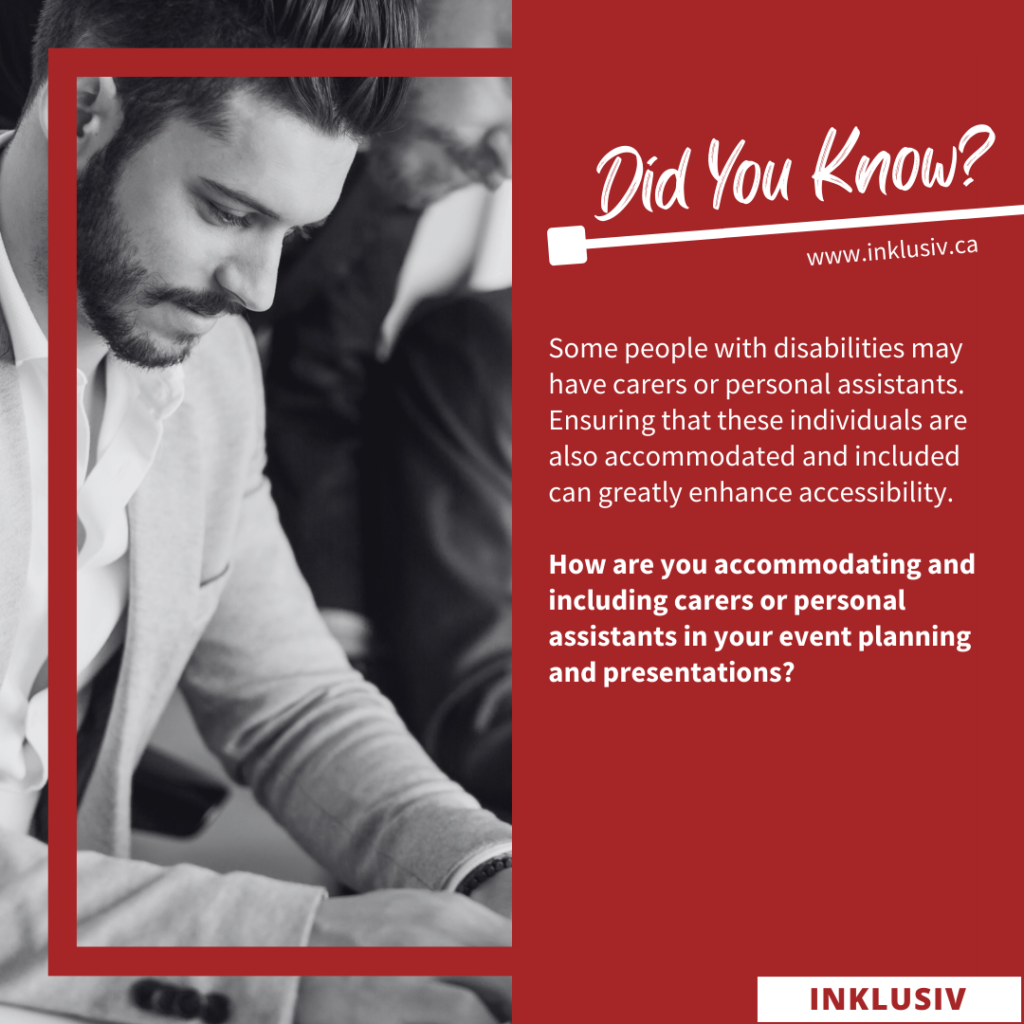

Some people with disabilities may have carers or personal assistants. Ensuring that these individuals are also accommodated and included can greatly enhance accessibility. How are you accommodating and including carers or personal assistants in your event planning and presentations?
More details about Did You Know… #110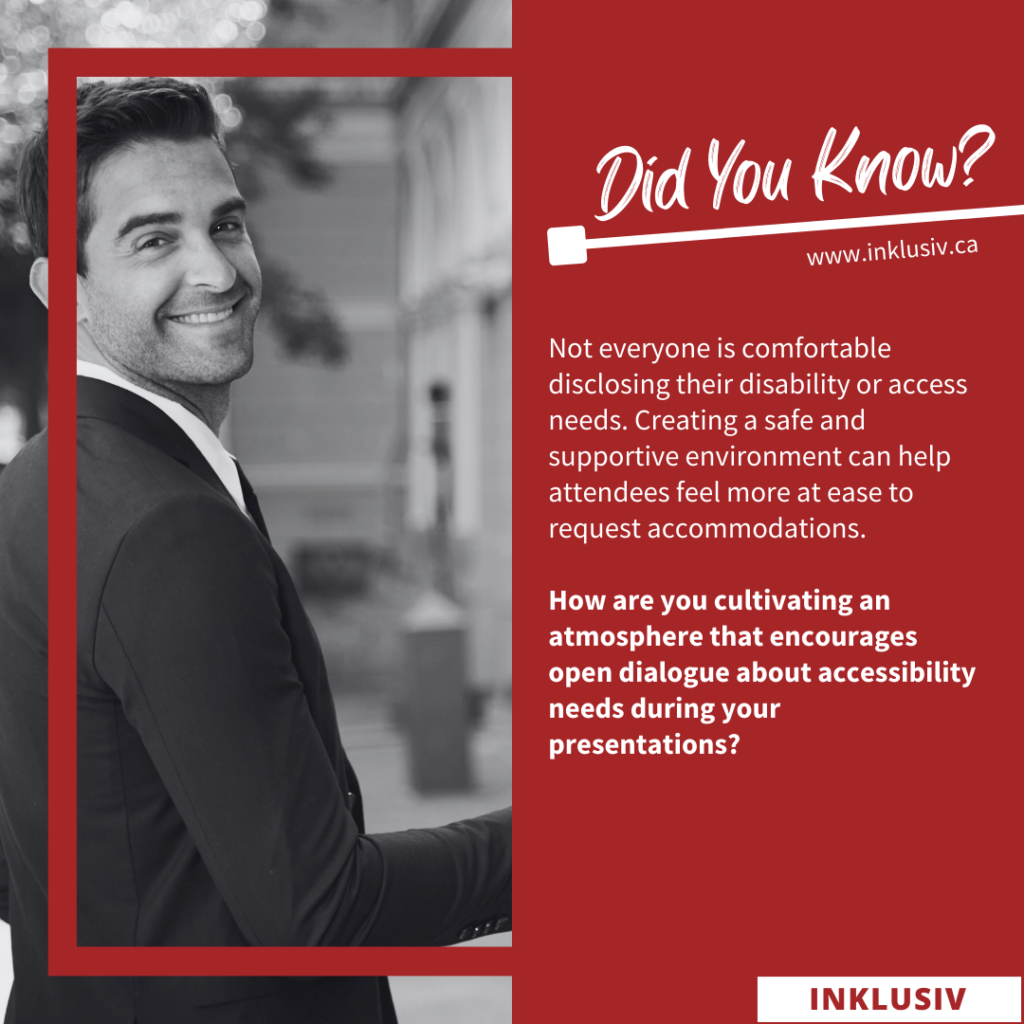

Not everyone is comfortable disclosing their disability or access needs. Creating a safe and supportive environment can help attendees feel more at ease to request accommodations. How are you cultivating an atmosphere that encourages open dialogue about accessibility needs during your presentations?
More details about Did You Know… #109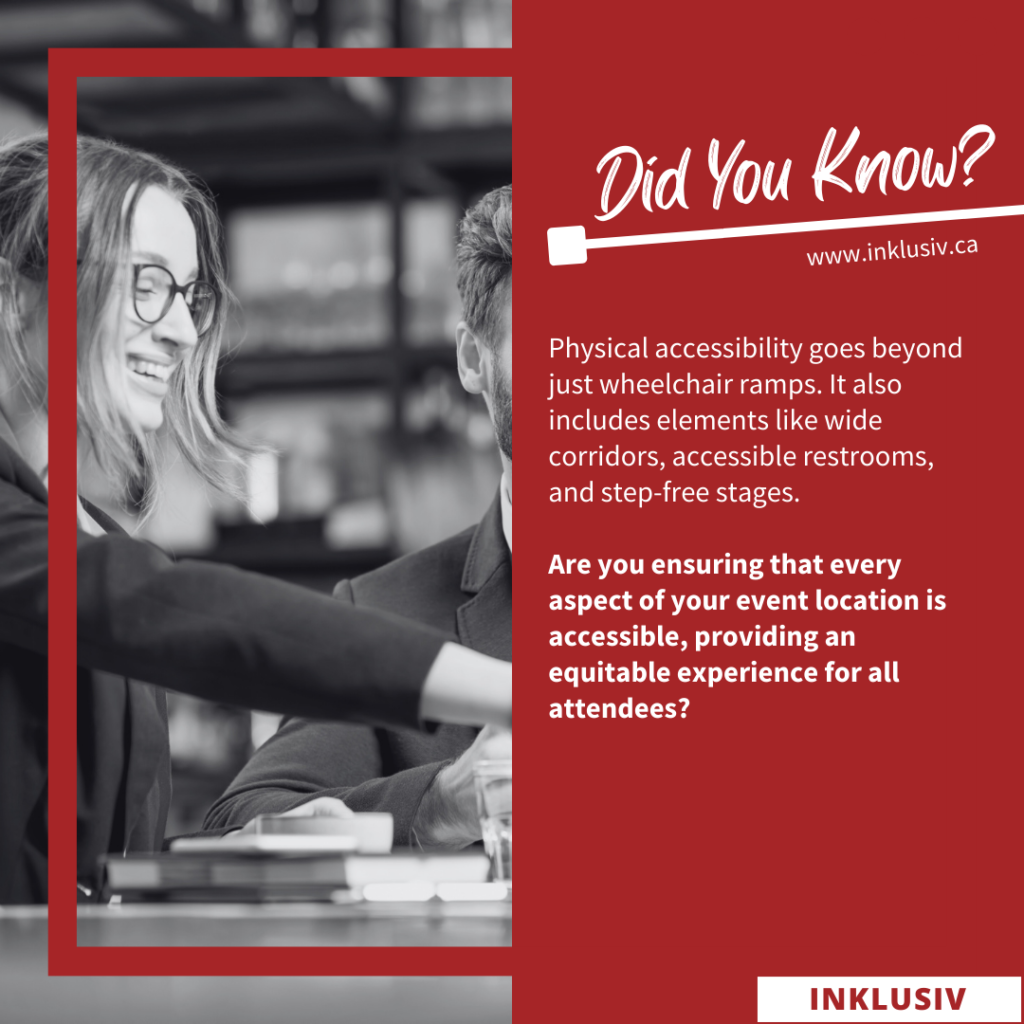

Physical accessibility goes beyond just wheelchair ramps. It also includes elements like wide corridors, accessible restrooms, and step-free stages. Are you ensuring that every aspect of your event location is accessible, providing an equitable experience for all attendees?
More details about Did You Know… #108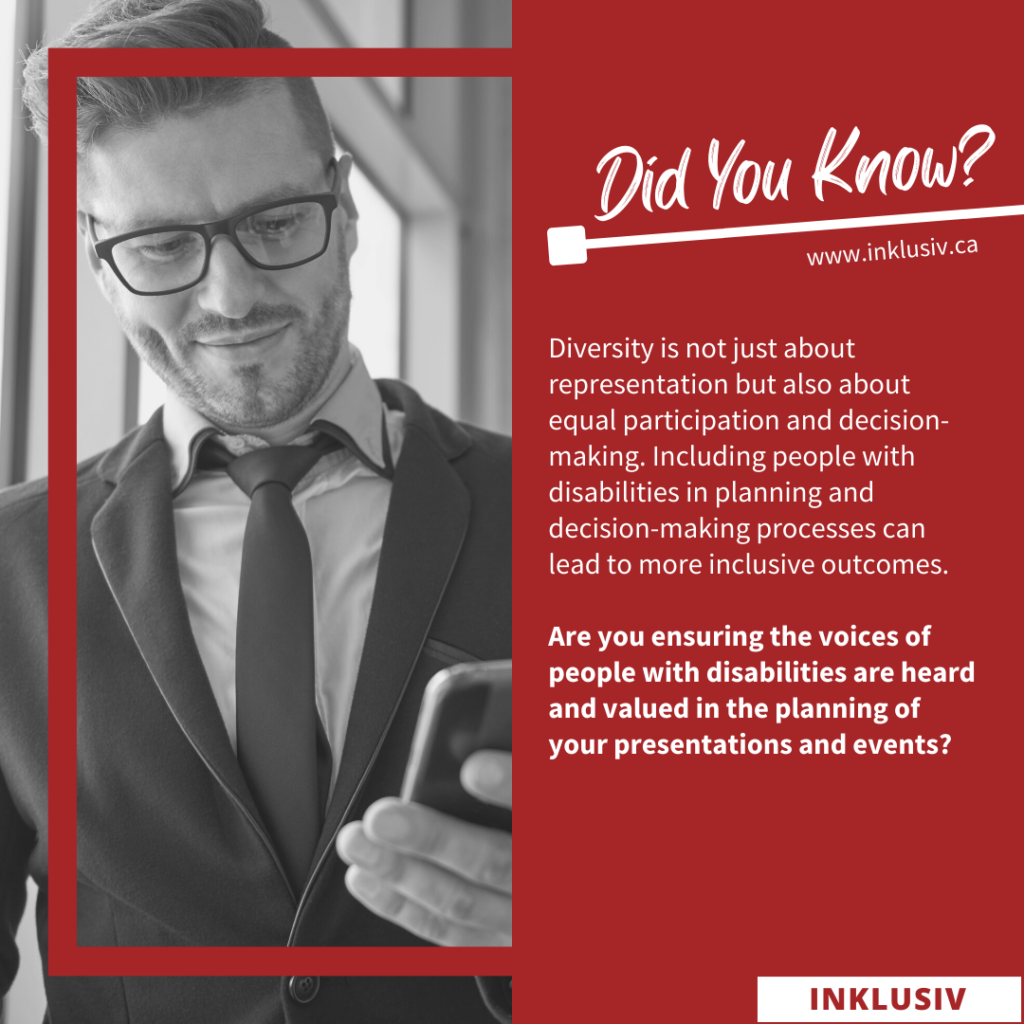

Diversity is not just about representation but also about equal participation and decision-making. Including people with disabilities in planning and decision-making processes can lead to more inclusive outcomes. Are you ensuring the voices of people with disabilities are heard and valued in the planning of your presentations and events?
More details about Did You Know… #107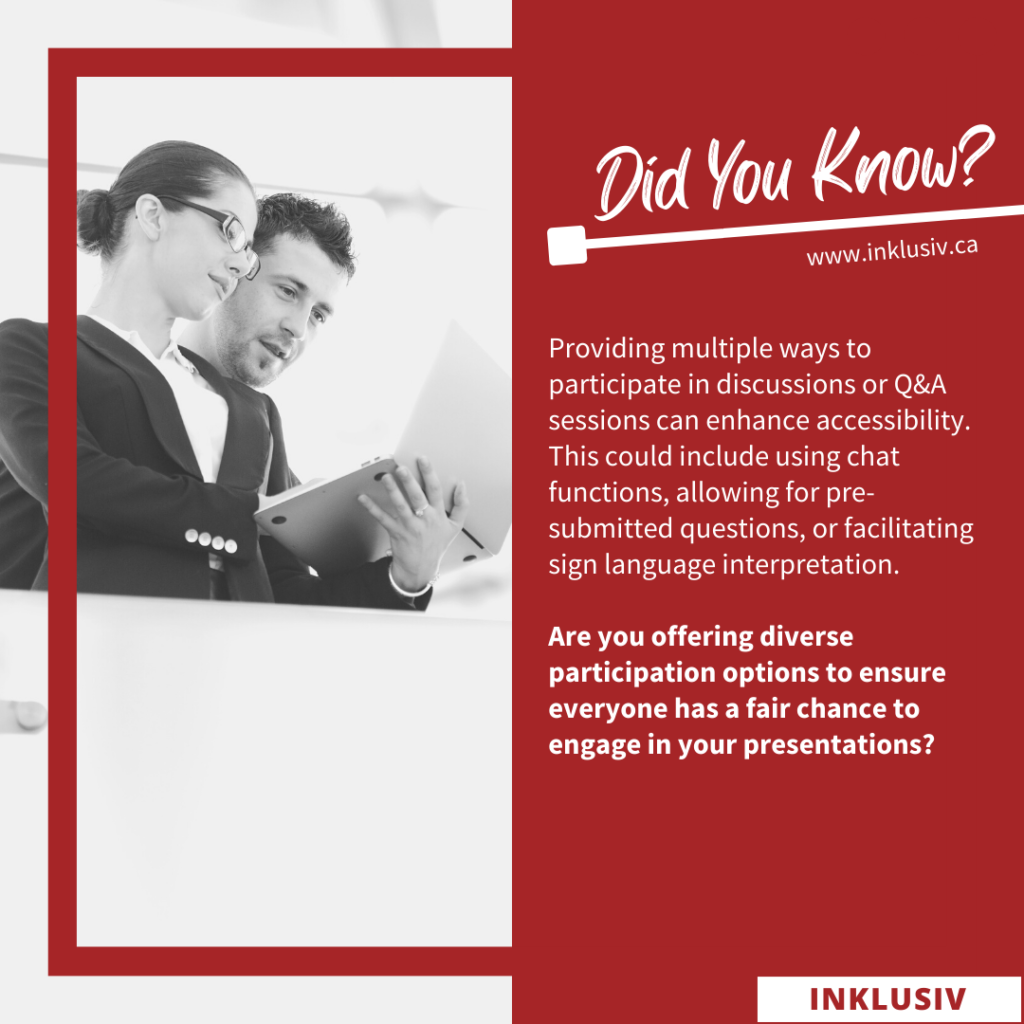

Providing multiple ways to participate in discussions or Q&A sessions can enhance accessibility. This could include using chat functions, allowing for pre-submitted questions, or facilitating sign language interpretation. Are you offering diverse participation options to ensure everyone has a fair chance to engage in your presentations?
More details about Did You Know… #106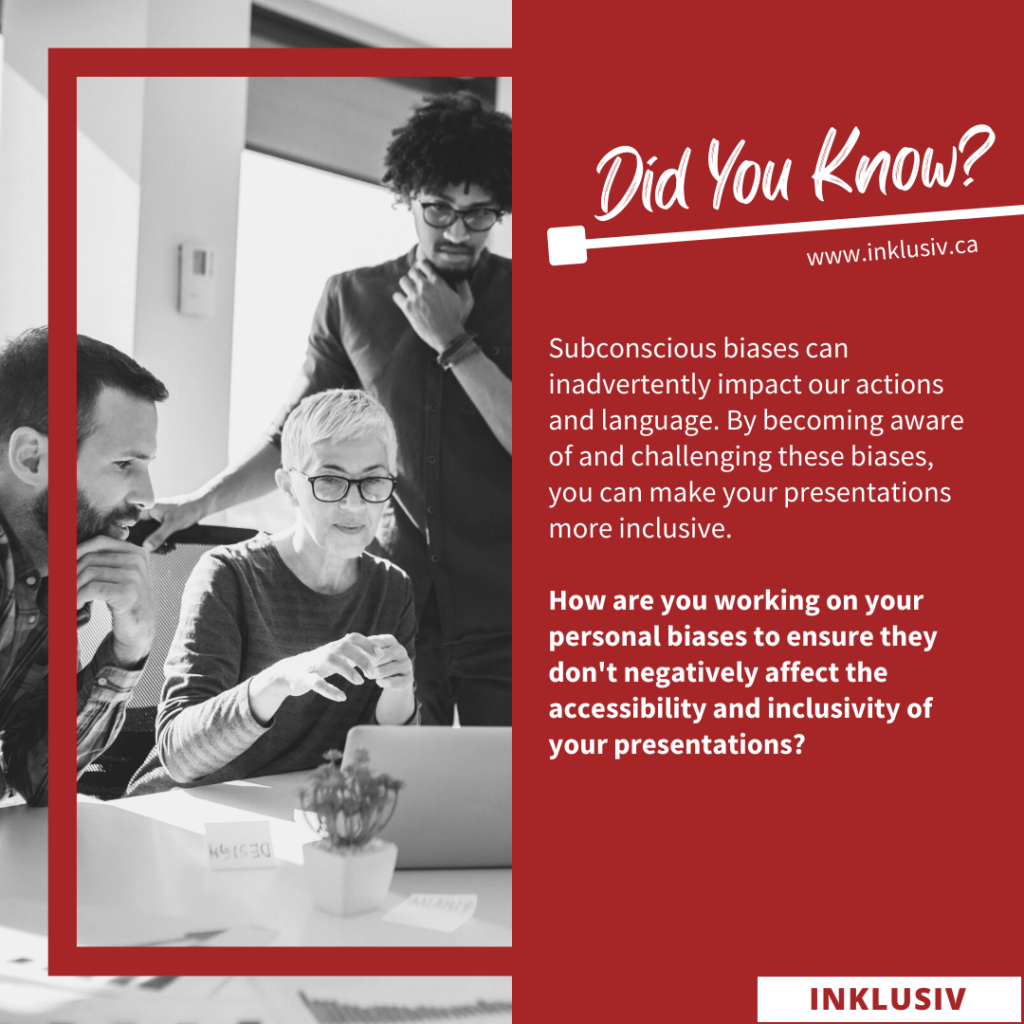

Subconscious biases can inadvertently impact our actions and language. By becoming aware of and challenging these biases, you can make your presentations more inclusive. How are you working on your personal biases to ensure they don’t negatively affect the accessibility and inclusivity of your presentations?
More details about Did You Know… #105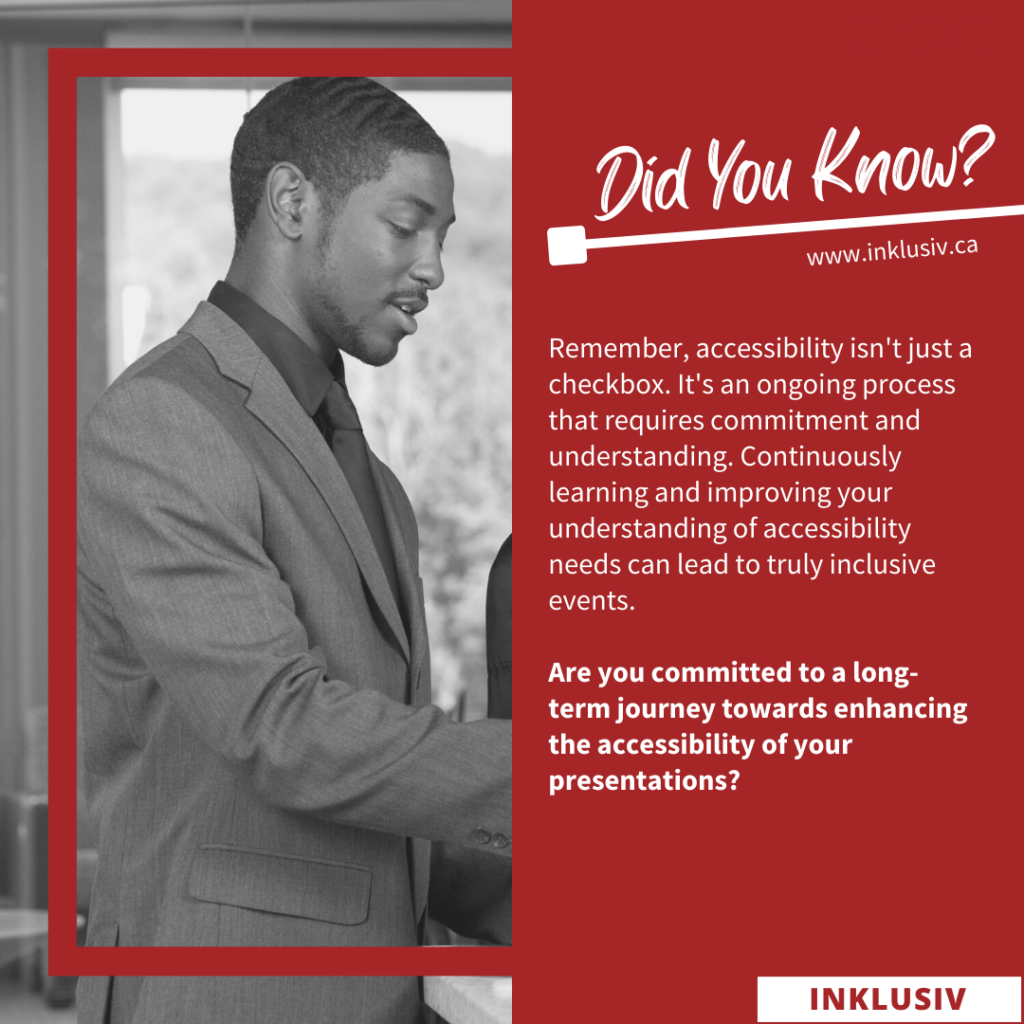

Remember, accessibility isn’t just a checkbox. It’s an ongoing process that requires commitment and understanding. Continuously learning and improving your understanding of accessibility needs can lead to truly inclusive events. Are you committed to a long-term journey towards enhancing the accessibility of your presentations?
More details about Did You Know… #104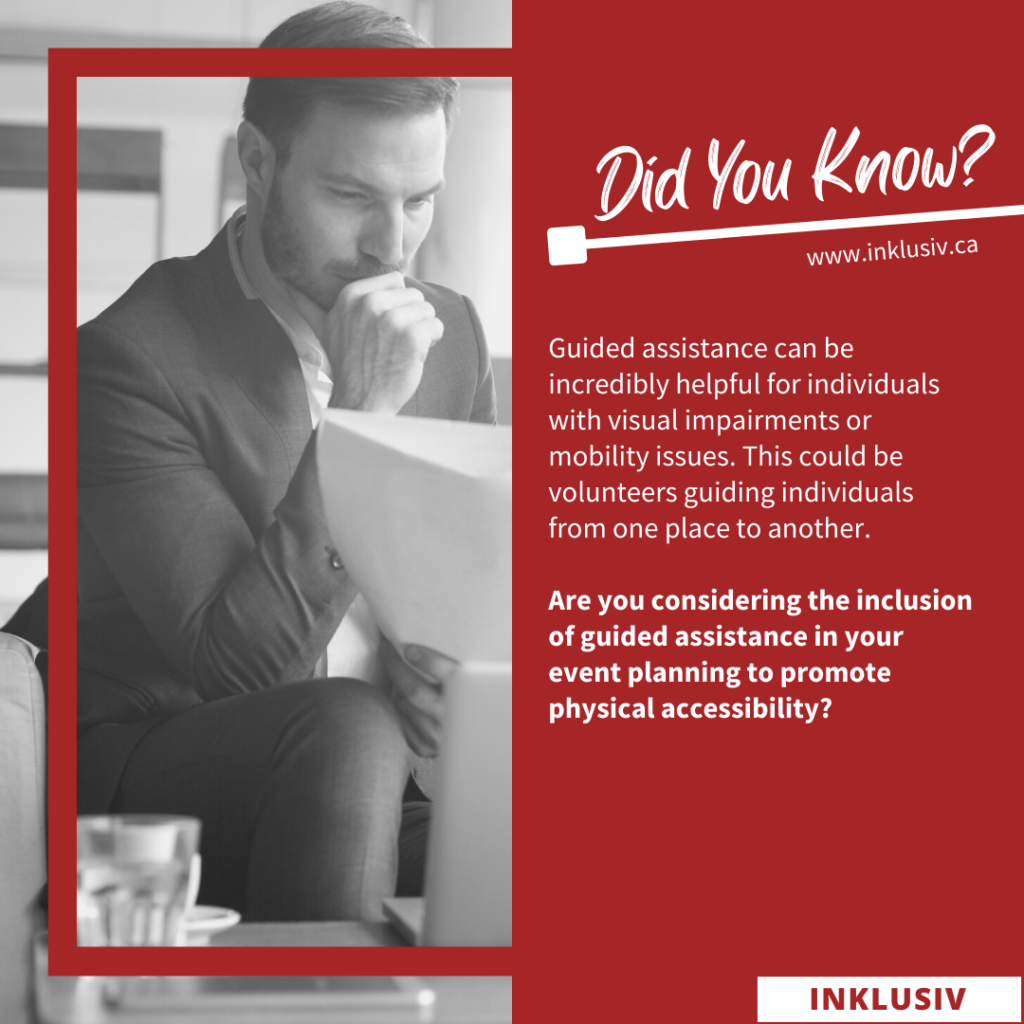

Guided assistance can be incredibly helpful for individuals with visual impairments or mobility issues. This could be volunteers guiding individuals from one place to another. Are you considering the inclusion of guided assistance in your event planning to promote physical accessibility?
More details about Did You Know… #103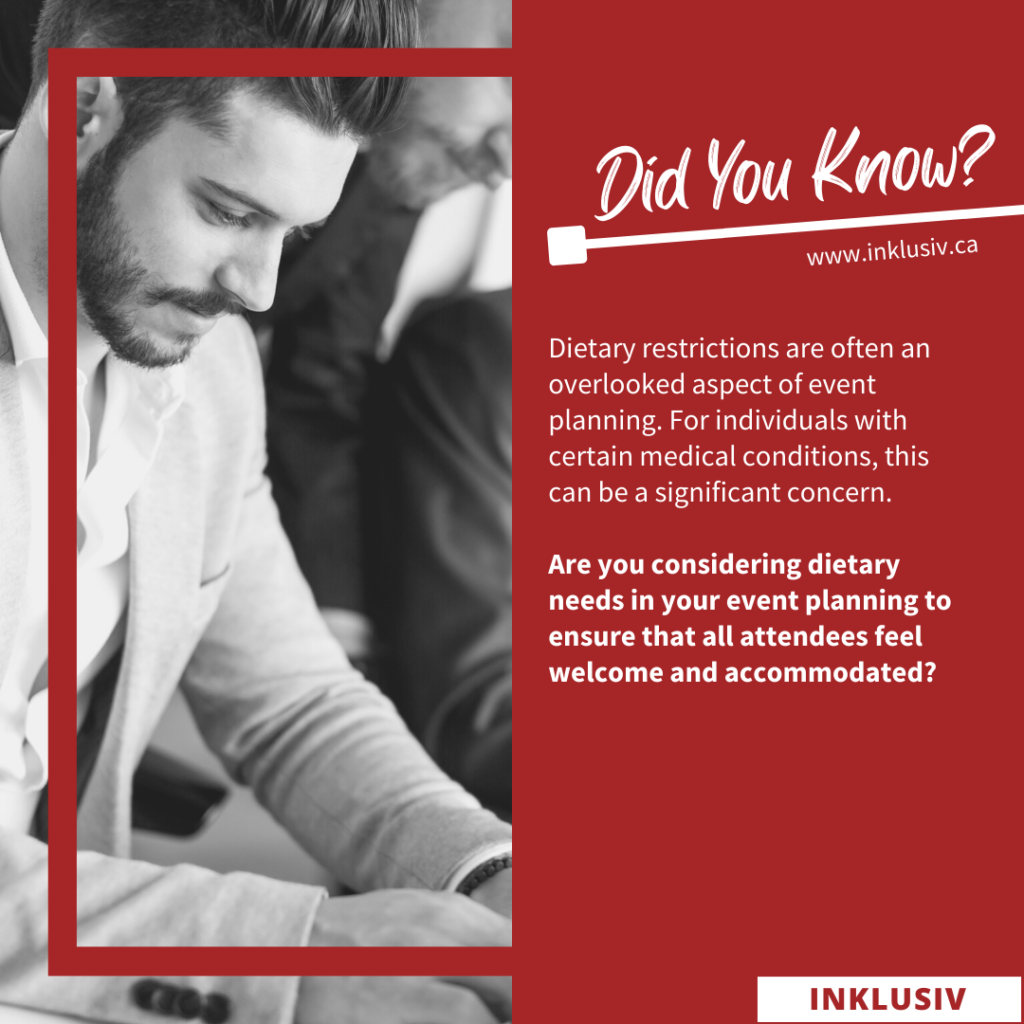

Dietary restrictions are often an overlooked aspect of event planning. For individuals with certain medical conditions, this can be a significant concern. Are you considering dietary needs in your event planning to ensure that all attendees feel welcome and accommodated?
More details about Did You Know… #102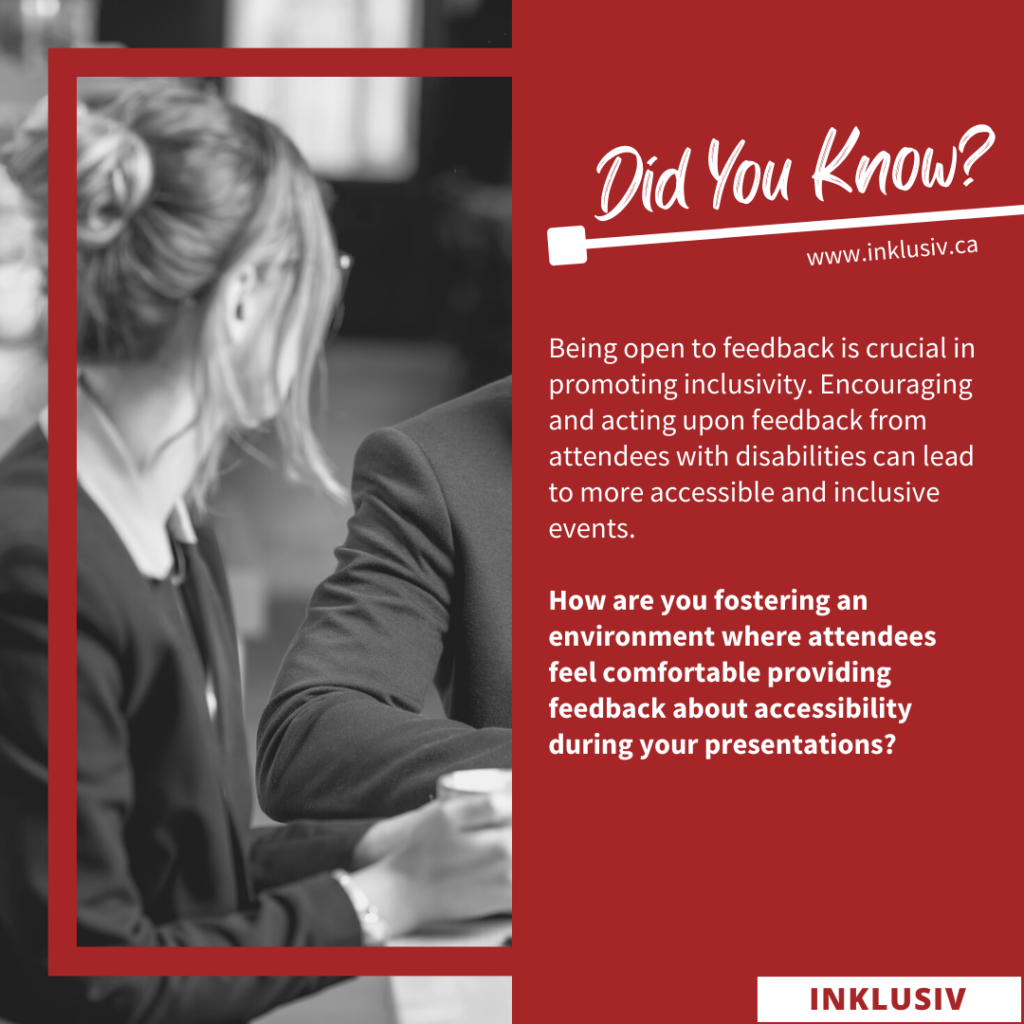

Being open to feedback is crucial in promoting inclusivity. Encouraging and acting upon feedback from attendees with disabilities can lead to more accessible and inclusive events. How are you fostering an environment where attendees feel comfortable providing feedback about accessibility during your presentations?
More details about Did You Know… #101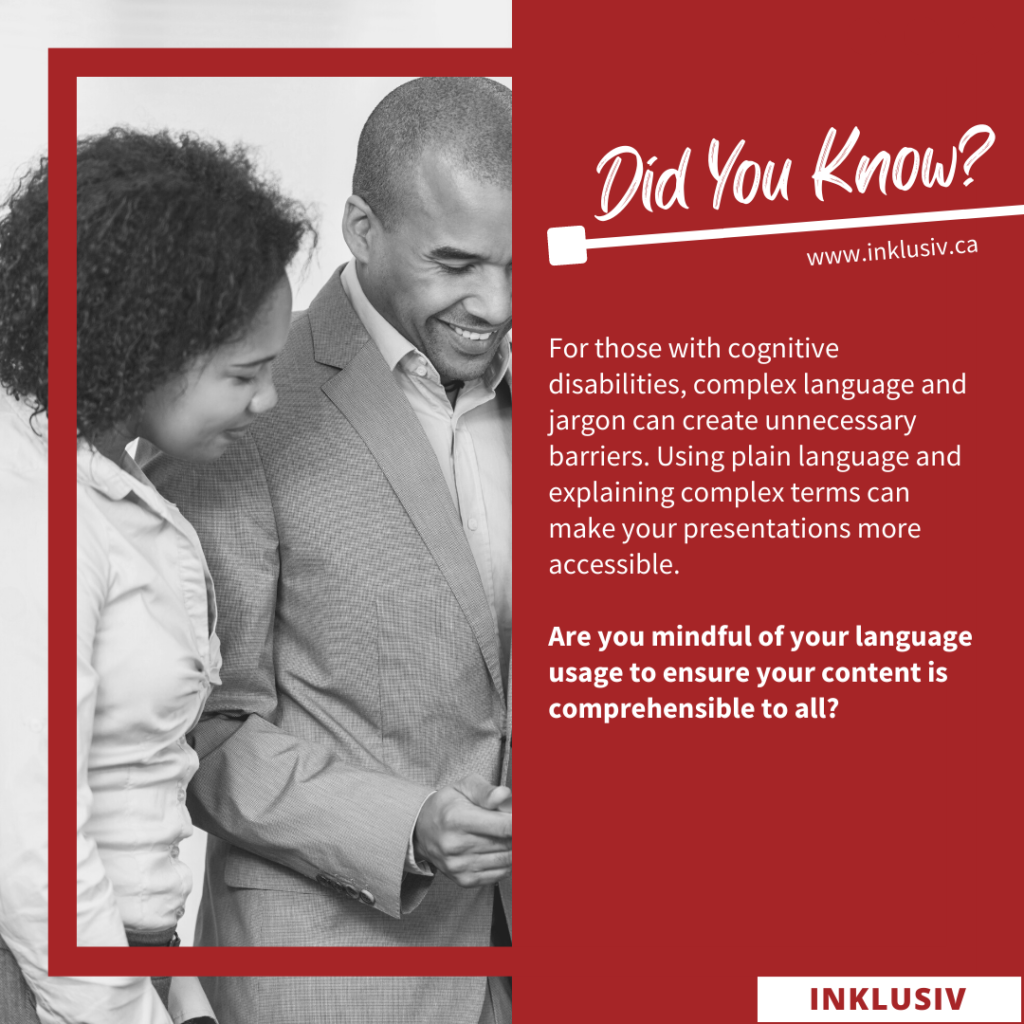

For those with cognitive disabilities, complex language and jargon can create unnecessary barriers. Using plain language and explaining complex terms can make your presentations more accessible. Are you mindful of your language usage to ensure your content is comprehensible to all?
More details about Did You Know… #100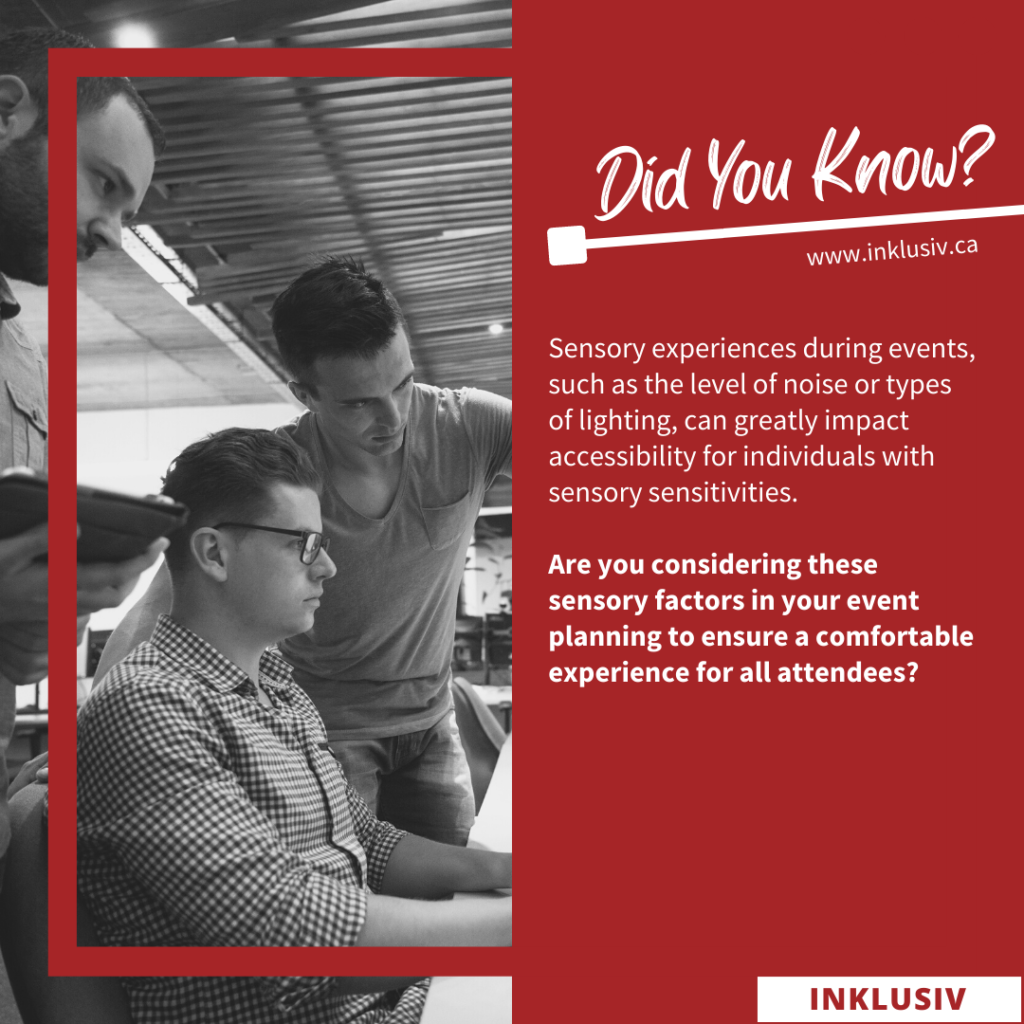

Sensory experiences during events, such as the level of noise or types of lighting, can greatly impact accessibility for individuals with sensory sensitivities. Are you considering these sensory factors in your event planning to ensure a comfortable experience for all attendees?
More details about Did You Know… #099

Sometimes, accommodations may not be immediately obvious or requested in advance. Being prepared to accommodate unexpected accessibility needs demonstrates a proactive commitment to inclusion. How are you ensuring readiness to address unforeseen accessibility needs during your presentations?
More details about Did You Know… #098